HTC One max Review - It's Huge
by Brian Klug on October 28, 2013 10:00 AM EST- Posted in
- Smartphones
- HTC
- Mobile
- One
- Snapdragon 600
- Android 4.3
- One max
The performance section is probably a good place to talk about one of the elephants in the room, and that’s the SoC inside the One max. The One max includes a Snapdragon 600 APQ8064T SoC, which consists of 4 Krait 300 cores running at up to 1.7 GHz, and Adreno 320 GPU, all built on TSMC’s 28nm LP process. This is the same SoC that shipped in the original HTC One, and the same 1.7 GHz bin as well. There have been three major variants or families of APQ8064(T) to date. There first was the option for the earliest 1.5 GHz Snapdragon S4 Pro version (AA suffix), the 1.7 GHz “8064T/Pro” variant in the HTC One and One max (AB suffix) which began the Snapdragon 600 branding, and finally the 1.9 GHz CPU and 450 MHz GPU variant we first saw in the SGS4 (AC suffix). Qualcomm usually has a number of revisions of its silicon, and with APQ8064 we saw quite a few. As an aside, expect similar with 8974 or Snapdragon 800.
There’s nothing wrong with the 1.7 GHz Snapdragon 600 variant, it was and still is a great performer, but the reality is that HTC falls behind on its hardware platform with the One max by not going to Snapdragon 800 (MSM8974) like the rest of the competition (Note 3, ASUS Padfone Infinity 2014, LG G2, Nexus 5, and so on). So much of the SoC performance and power story right now is gated by process, and 8974 moves to TSMC’s high-k metal gate 28nm HPM process which affords some clock headroom (up to 2.3 GHz) and lower power consumption at lower performance states for Krait 400 (which is essentially 300 implemented on that new process). 8974 also brings a beefier Adreno 330 GPU with more ALUs and higher clocks, in addition to the new modem IP block, but I won’t go over all of that.
It’s pretty obvious to me that the One max stays with the same SoC used in the original One for a few reasons which ultimately boil down to cost and margin. It obviously means HTC can share the same SoC between the One and One max, and since it’s later in APQ8064’s lifespan I would suspect HTC was able to secure good pricing for it. Having closer shared hardware platform means about the same software stack on top of it, and the same source tree from Qualcomm (BSP) for building and testing ROMs. This makes the software maintenance and update costs lower for the One max. I won’t speculate too much beyond that, but I wouldn’t be surprised if the One max started out an 8974 device but later became an 8064 device, given its timing.
| I Can't Believe I Have to Regularly Update This Table | |||||||||||
| Device | SoC | Cheats In | |||||||||
| 3DM | AnTuTu | AndEBench | Basemark X | Geekbench 3 | GFXB 2.7 | Vellamo | |||||
| ASUS Padfone Infinity | Qualcomm Snapdragon 800 | N | Y | N | N | N | N | Y | |||
| HTC One | Qualcomm Snapdragon 600 | Y | Y | N | N | N | Y | Y | |||
| HTC One mini | Qualcomm Snapdragon 400 | Y | Y | N | N | N | Y | Y | |||
| HTC One max | Qualcomm Snapdragon 600 | Y | Y | N | N | N | Y | Y | |||
| LG G2 | Qualcomm Snapdragon 800 | N | Y | N | N | N | N | Y | |||
| Moto RAZR i | Intel Atom Z2460 | N | N | N | N | N | N | N | |||
| Moto X | Qualcomm Snapdragon S4 Pro | N | N | N | N | N | N | N | |||
| Nexus 4 | Qualcomm APQ8064 | N | N | N | N | N | N | N | |||
| Nexus 7 | Qualcomm Snapdragon 600 | N | N | N | N | N | N | N | |||
| Samsung Galaxy S 4 | Qualcomm Snapdragon 600 | N | Y | Y | N | N | N | Y | |||
| Samsung Galaxy Note 3 | Qualcomm Snapdragon 800 | Y | Y | Y | Y | Y | N | Y | |||
| Samsung Galaxy Tab 3 10.1 | Intel Atom Z2560 | N | Y | Y | N | N | N | N | |||
| Samsung Galaxy Note 10.1 (2014 Edition) | Samsung Exynos 5420 | Y(1.4) | Y(1.4) | Y(1.4) | Y(1.4) | Y(1.4) | N | Y(1.9) | |||
| NVIDIA Shield | Tegra 4 | N | N | N | N | N | N | N | |||
The HTC One max, like a ton of other devices, continues to employ a CPU optimization “boost” feature which plugs in all the CPU cores and increases clocks to their maximum upon detection of certain benchmarks. It’s sad that this needs to be a regular disclosure for each handset release, since the narrative will likely be the same for the near future, but yes the One max does this.
Given product development cycles and how long it takes software in the Android landscape to make it through the chain from internal OEM testing to operator test approval and finally hitting devices, I expect we’ll see a pipeline of devices with this “feature” enabled for a while before it changes, even if we could change every OEM’s mind about it right now. I’m starting to understand more about the origin of these optimizations, the list of APKs they detect and boost for, and what party is ultimately responsible, but that’s a story for another day.
CPU
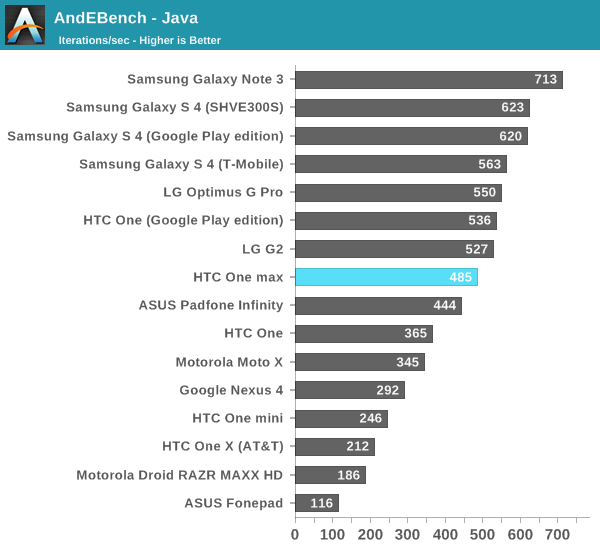
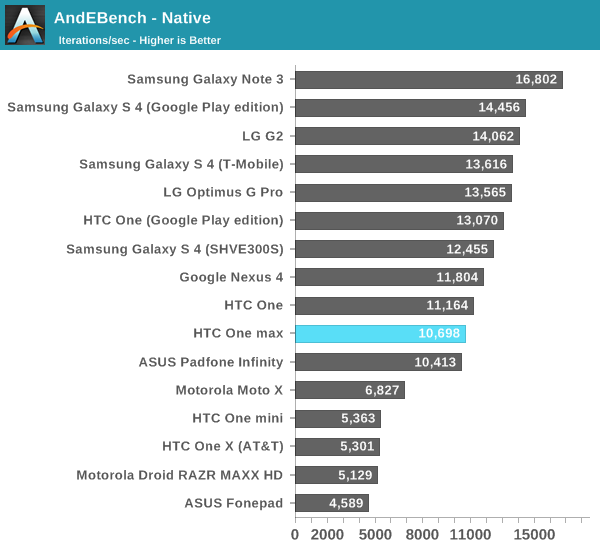
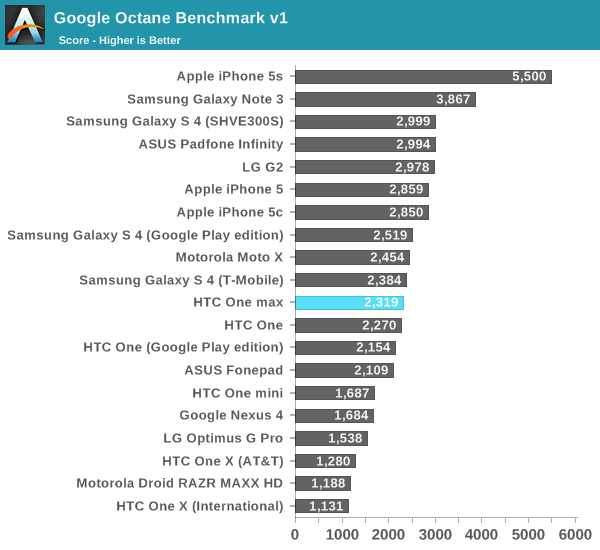
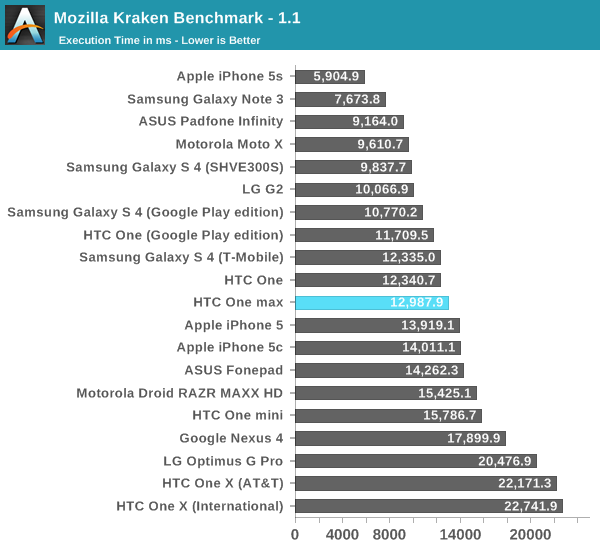
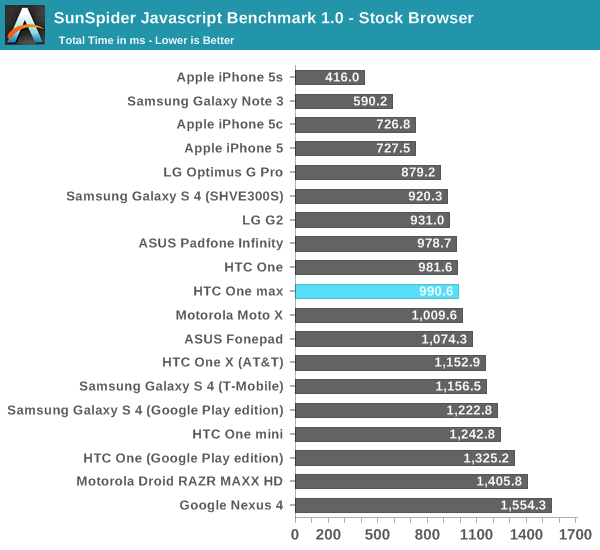
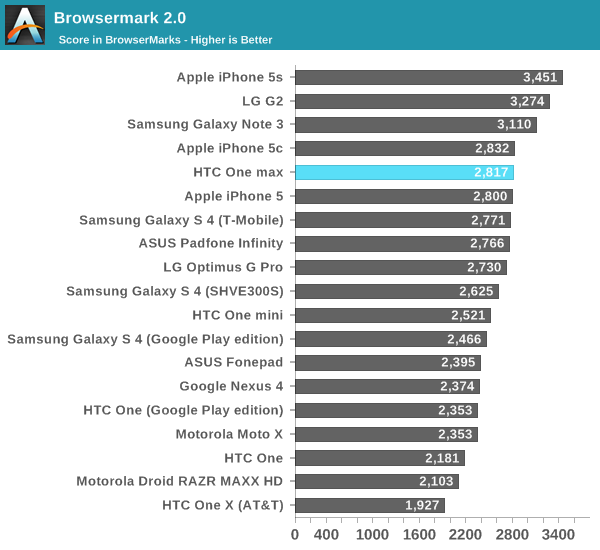
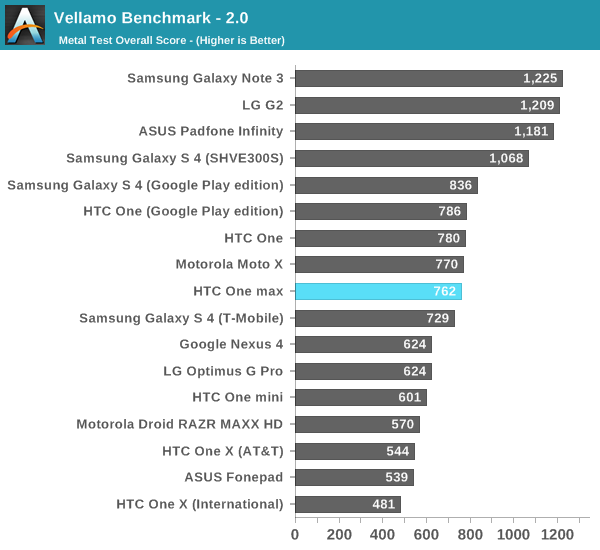
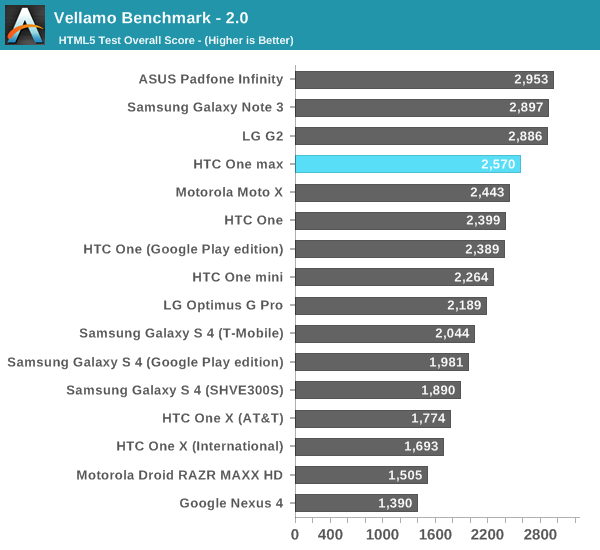
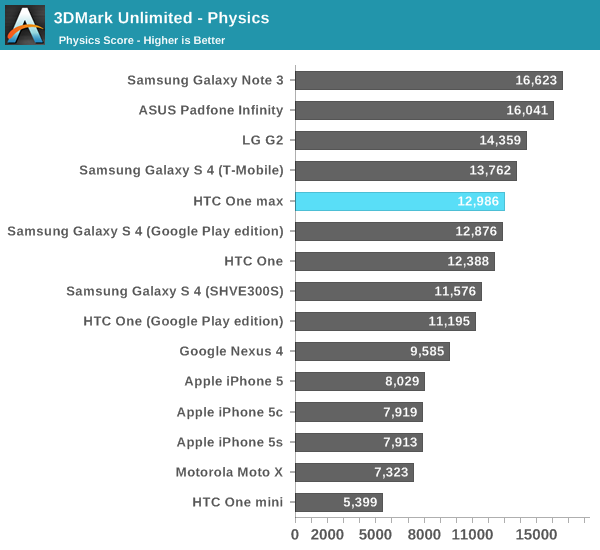
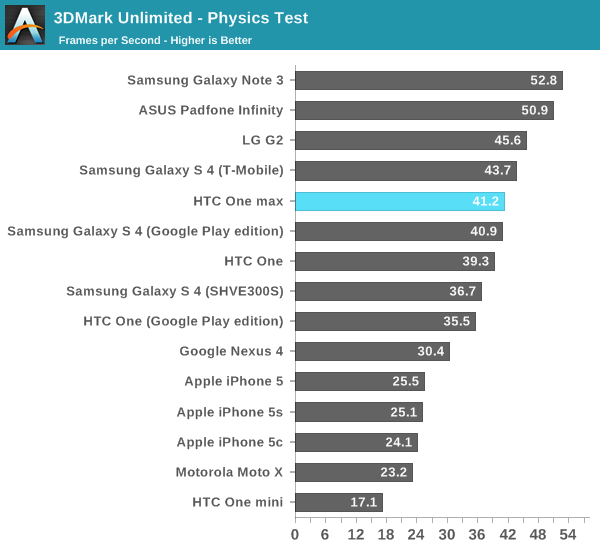
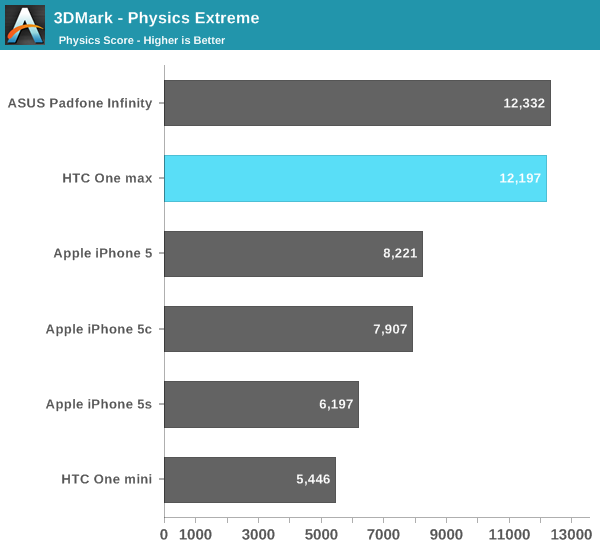
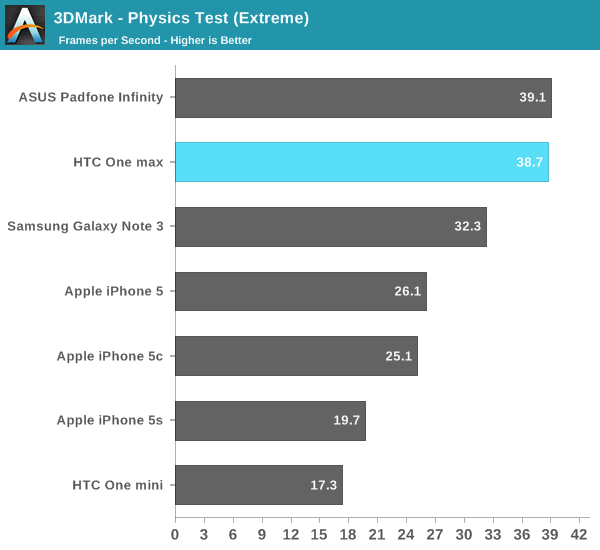
GPU
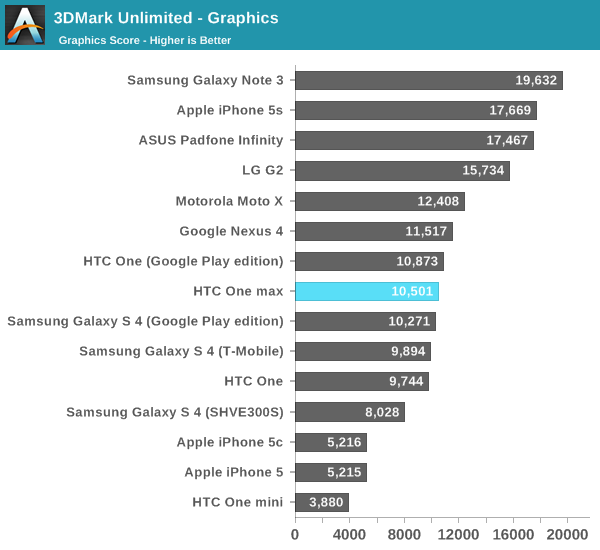
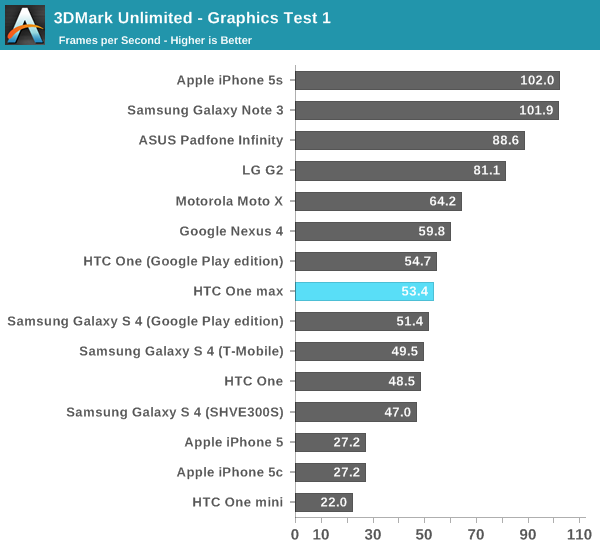
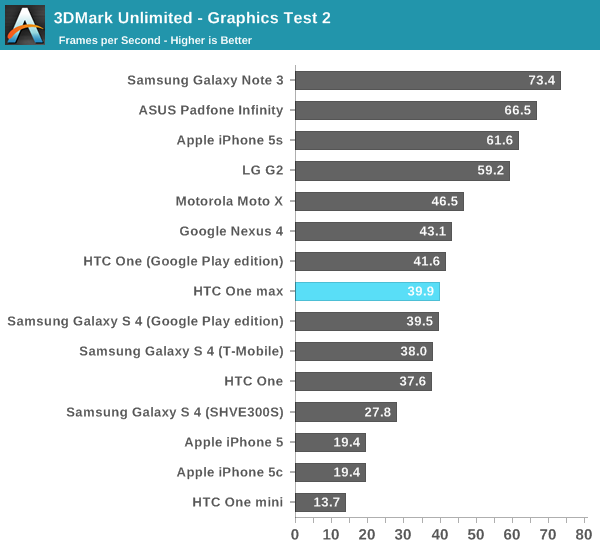
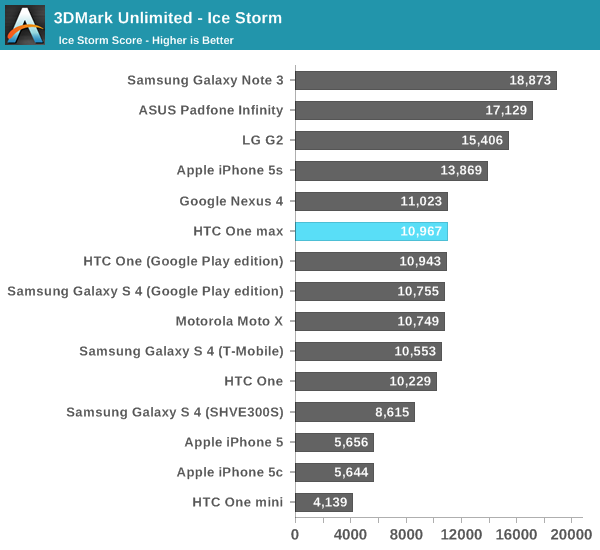
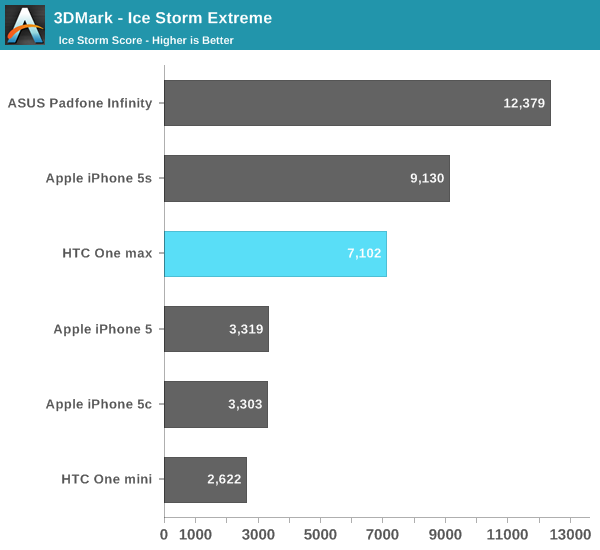
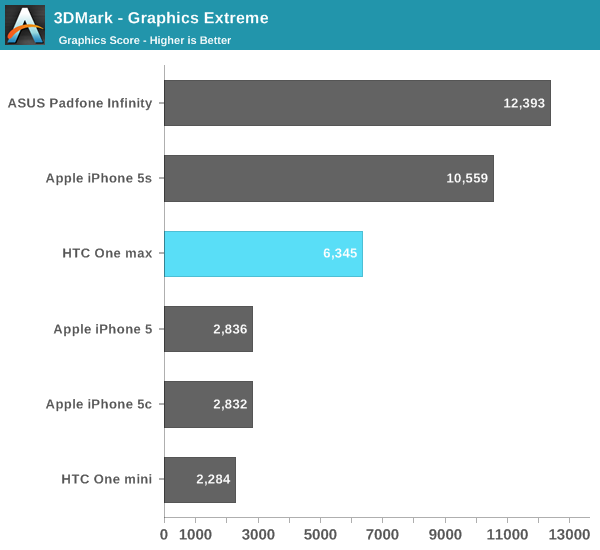
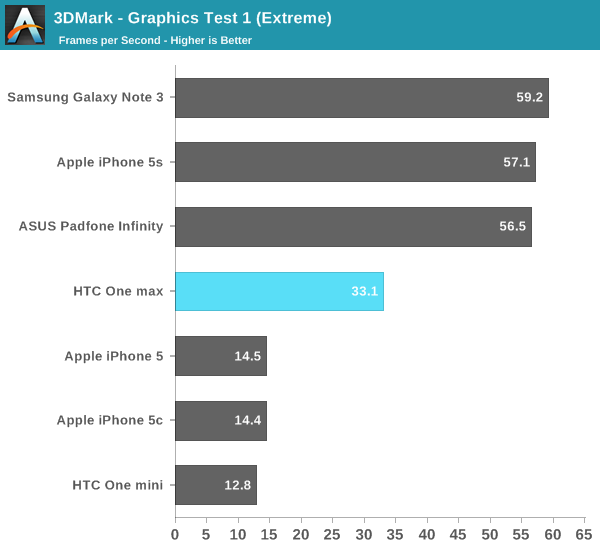
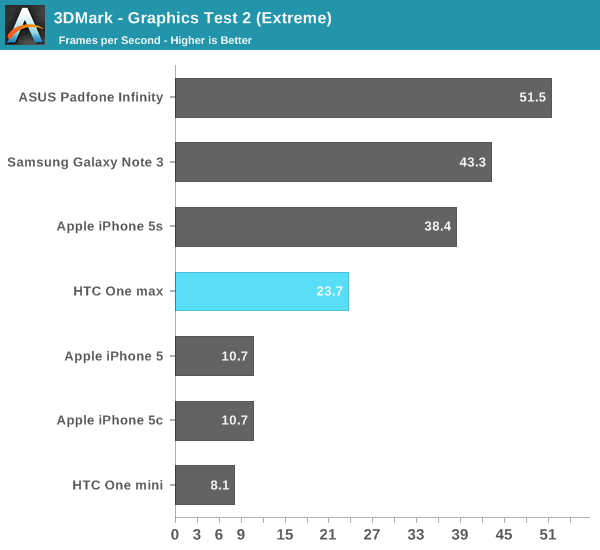
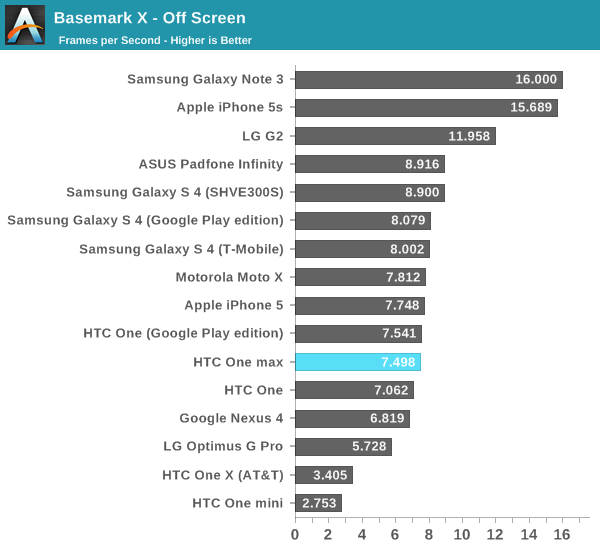
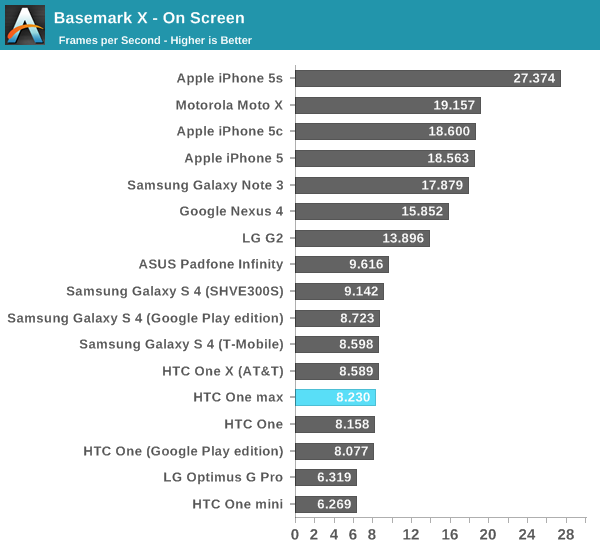
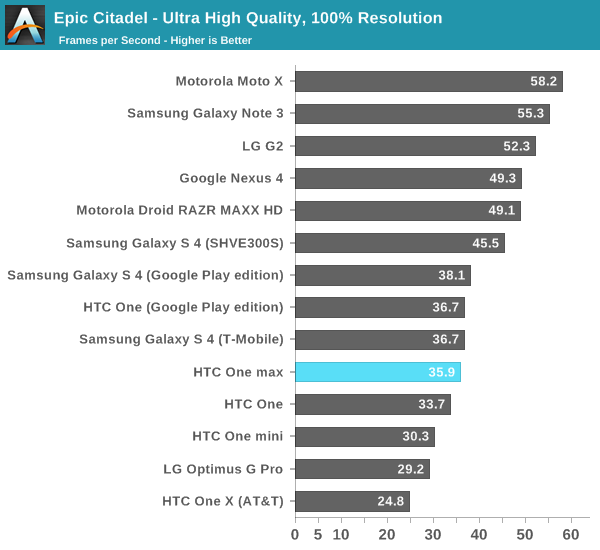
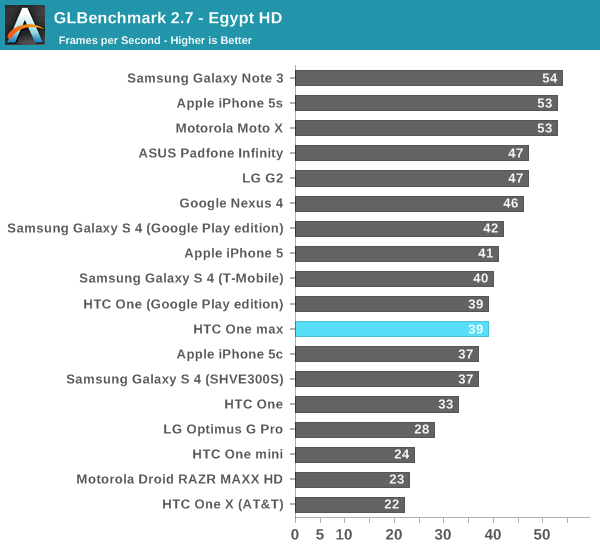
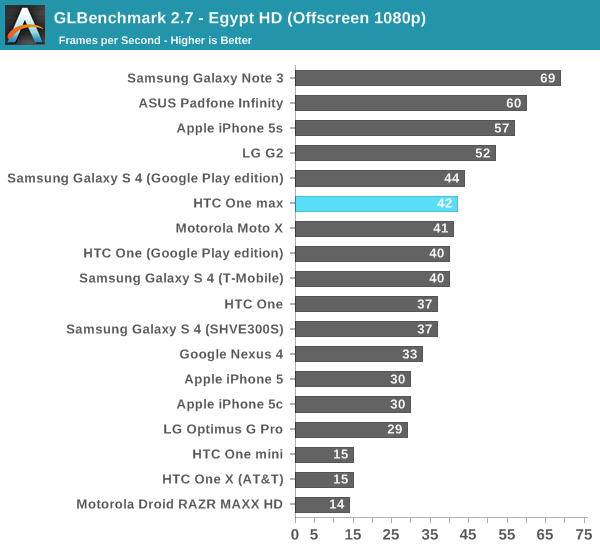
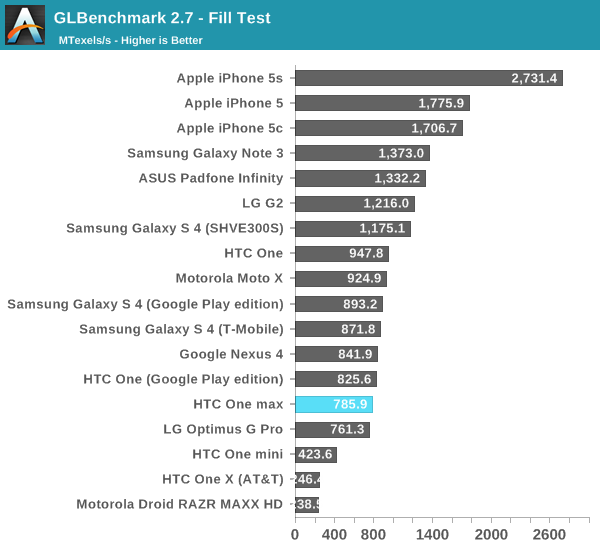

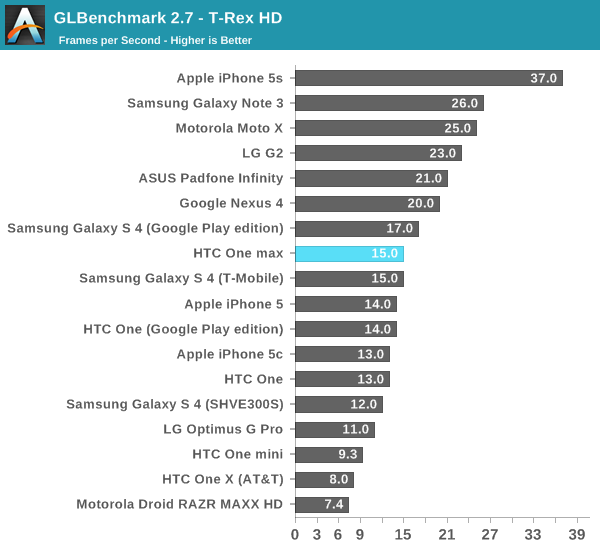
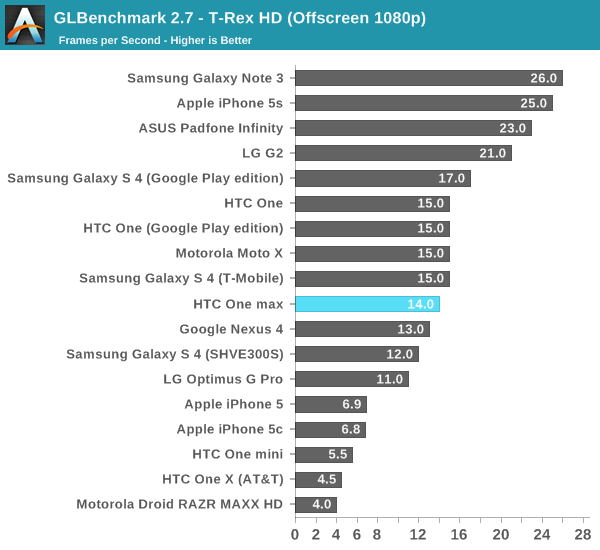
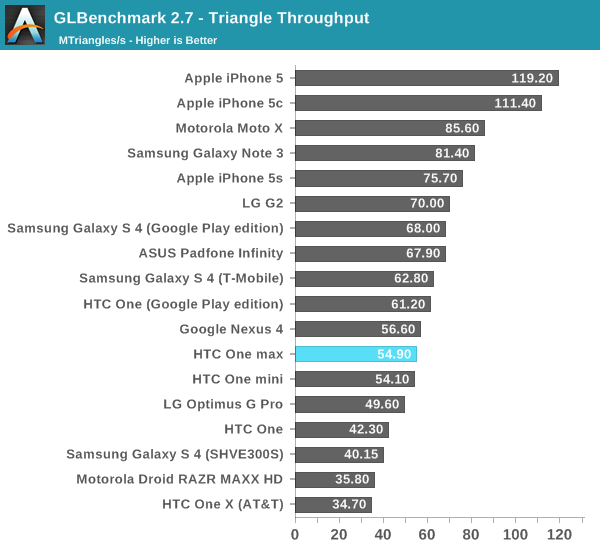
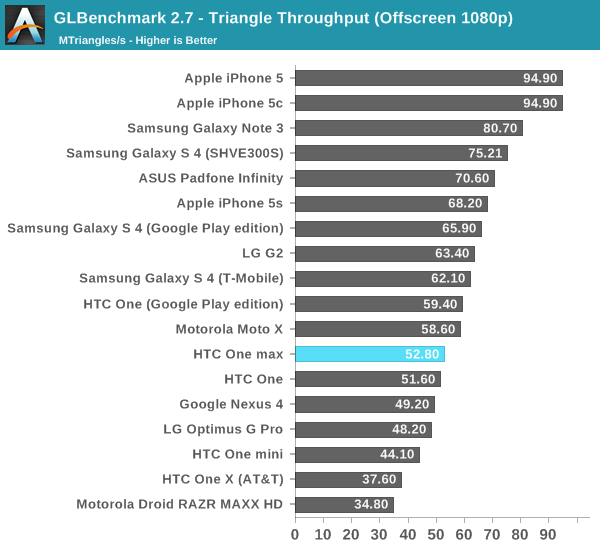
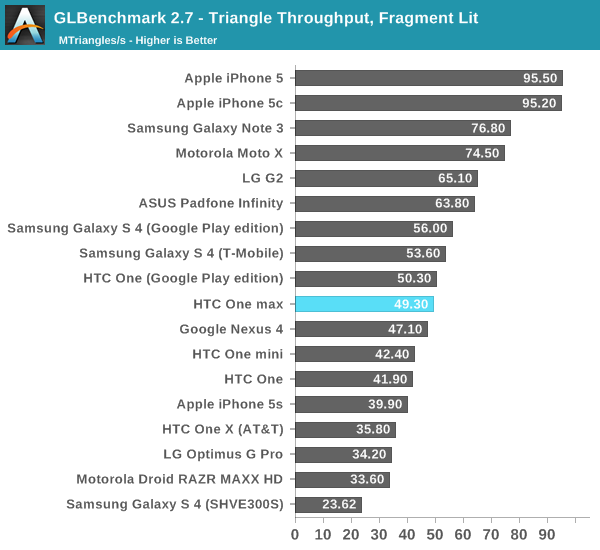
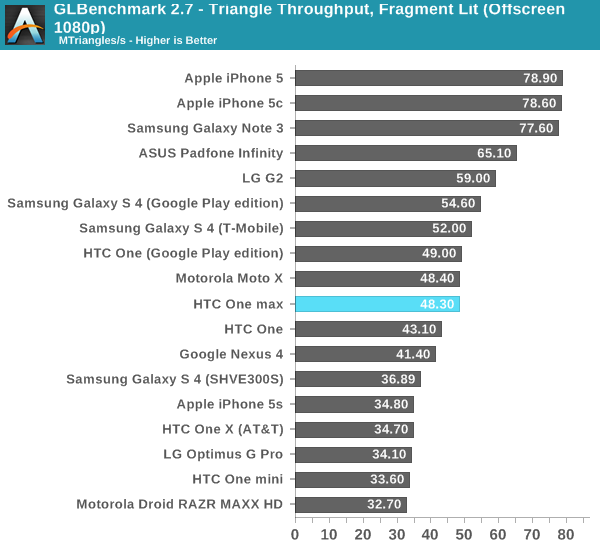
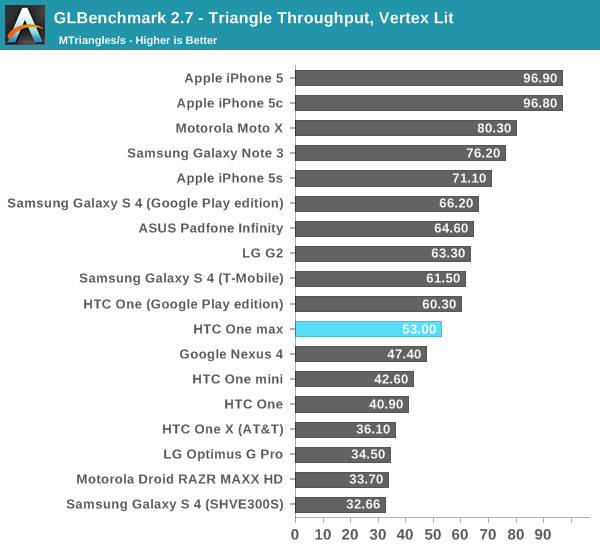
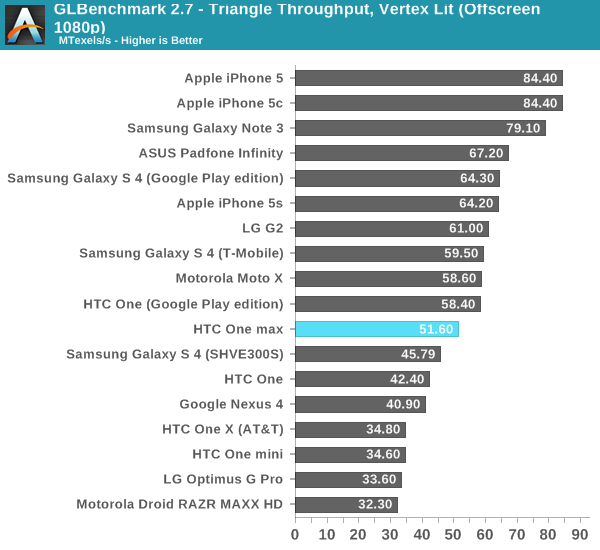
Storage
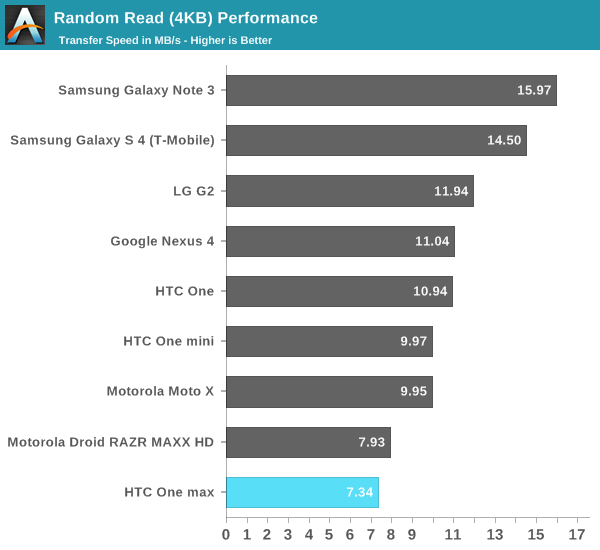
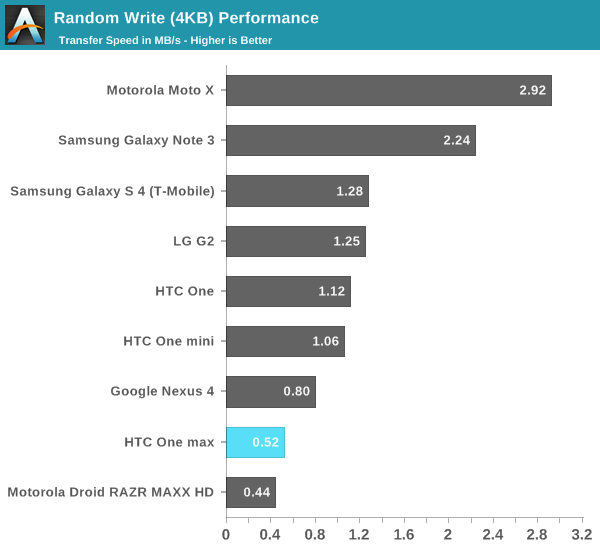
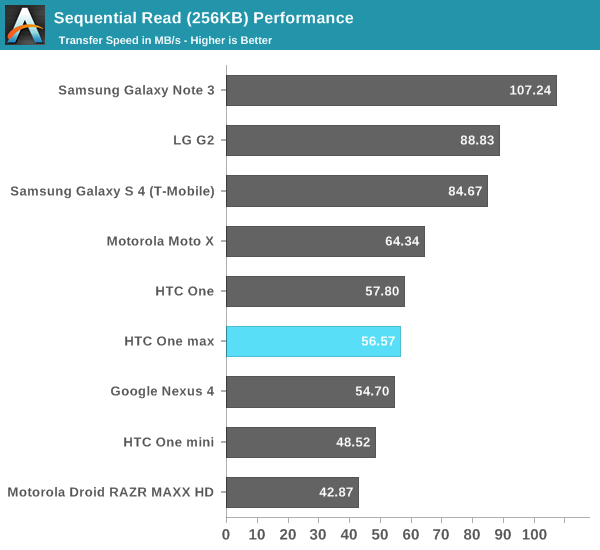
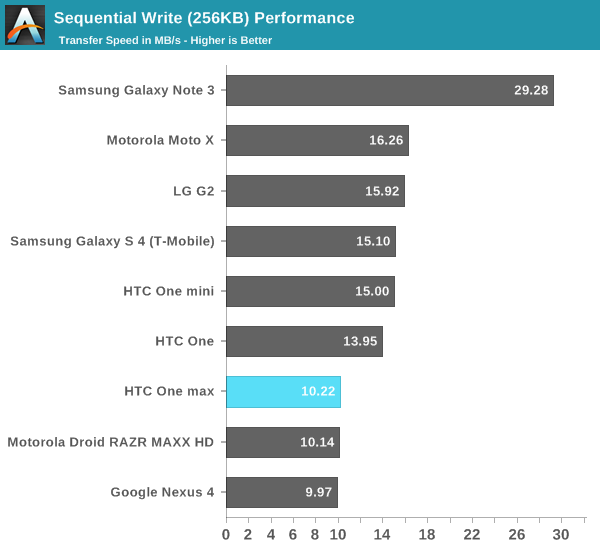
I’m not going to go through all the benchmark results on the One max since again it’s the 1.7 GHz Snapdragon 600 SoC we’re very familiar with at this point. The only oddity is storage performance, where the One max trails in random writes and reads, I'd attribute this to a different eMMC being used. The rest of the results are essentially within the margin of error. I initially suspected that the One max might have a bit more thermal headroom than the One, but this doesn't really seem to play itself out in the results, possibly due to the removable back door.


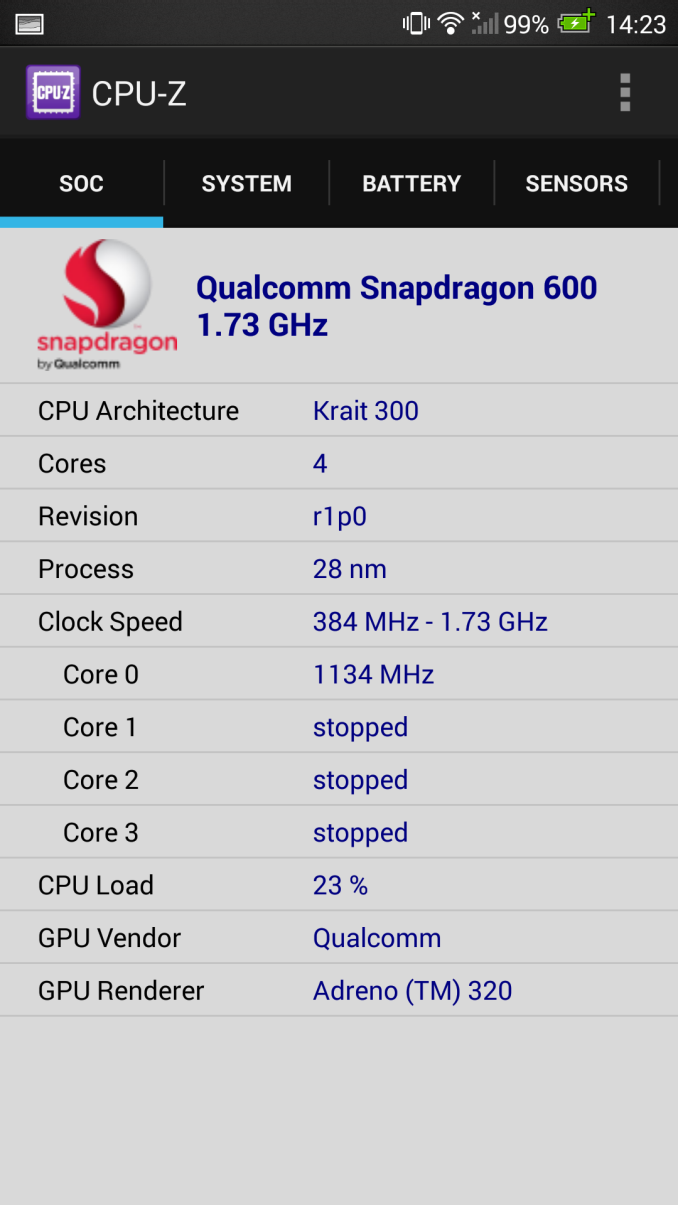
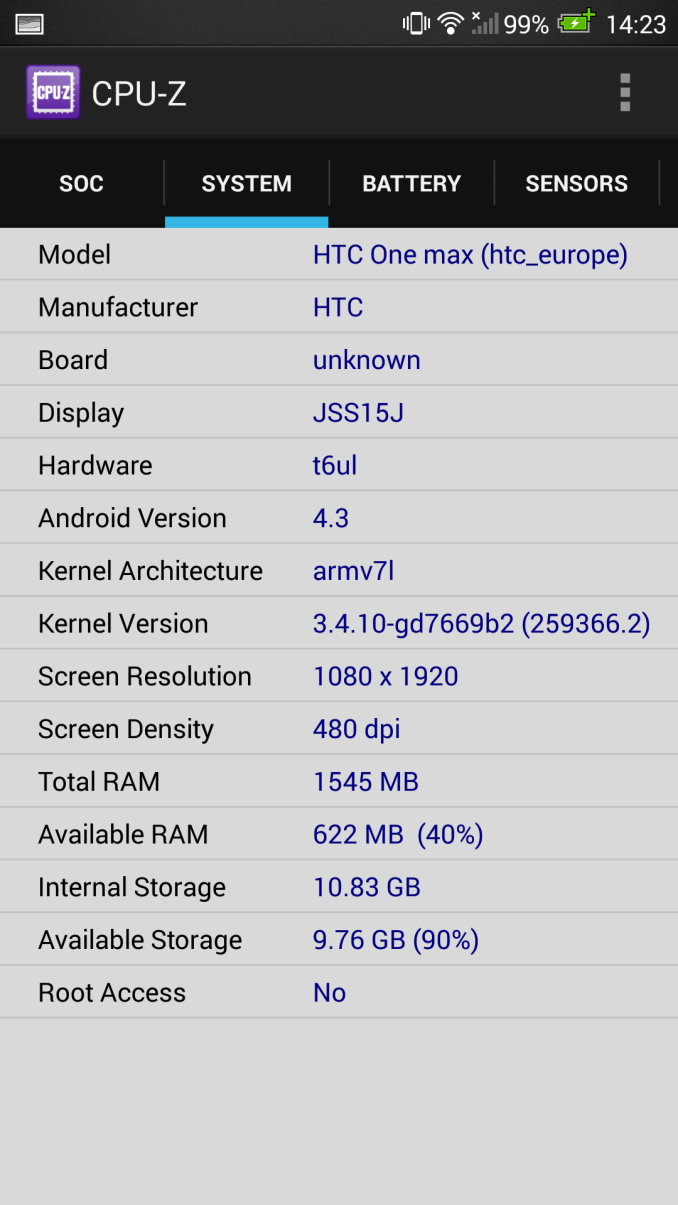








197 Comments
View All Comments
AbbyYen - Tuesday, October 29, 2013 - link
oh ya, one more thing, the capacitive button. must have Option, Home, and Back. the option there, when in home page, when you click it should have the notification bar option. so that you can operate in one hand! no need to use the other hand to pull down the notification option. multi task button and search button are useless. long press home button and let it show the multitask window.Ranger101 - Tuesday, October 29, 2013 - link
As one of the "incredibly small percentage of users that clamors for an SD card", I feel I need to set you straight on the issue. Using one's smartphone as a media player makes an SD card necessary if a sizeable collection of wav files are to be stored on the phone. Secondly I notice that you devote very little attention to the audio quality of the cellphones in your reviews. I suggest that you dispense with any comments on the sound quality of the built in speaker and focus more on important audio issues like what DAC the cellphone uses and what it sounds like through a decent pair of headphones.Ranger101 - Tuesday, October 29, 2013 - link
You boys don't take well to criticism do you, every time a comment remotely criticising your articles is posted, it is removed. With that attitude, like the micro sd card, Anandtech will be going the way of the dodo soon as well. I didn't realise you were so narrow minded.superflex - Tuesday, October 29, 2013 - link
AT is going nowhere. You're SD card is.Ranger101 - Tuesday, October 29, 2013 - link
You boys don't take well to criticism do you, every time a comment remotely criticising your articles is posted, it is removed. With that attitude, like the micro sd card, Anandtech will be going the way of the dodo soon as well. I didn't realise you were so narrow minded.MercuryStar - Tuesday, October 29, 2013 - link
I don't know whether you're just having trouble browsing the comments, but there are many comments critical of the article here, many with responses. Your claim doesn't seem to hold up.Davidjan - Tuesday, October 29, 2013 - link
I prefer One. SD slot is not important for me, because there is an option to extend storage with OTG reader like Meenova MicroSD Reader: http://goo.gl/U6IyYrituraj - Wednesday, October 30, 2013 - link
Really laughed out loud at that stupid thing..Impulses - Monday, November 11, 2013 - link
It actually works just fine, if all you want is space for movies during a long flight (or music for special occasions etc) then it's a perfectly viable alternative to built in cardslots. I use mine pretty often, along with a regular USB OTG cable when I want to pull RAW files from my camera or access stuff I've brought from the PC on a faster USB 3.0 stick. All of it is more convenient than removing my case to get at the card on older phones I've had...Honestly, I'd only want a microSD slot at this point if it's easily accessed from the outside like some Sony phones etc, but I can easily live without it as long as the phone has at least 32GB, so can most people. The price gouging for SKUs with more storage really has to stop tho.
apaceeee - Tuesday, October 29, 2013 - link
The frarme is tooooooo narrow...It's almost frameless...And I trust it can be carelessly touched .